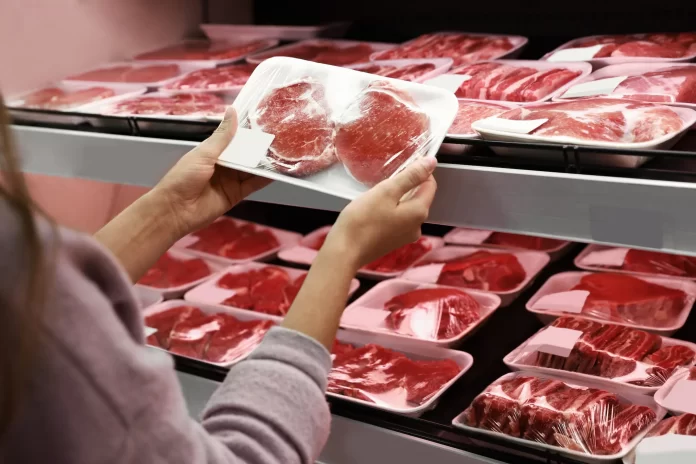Last Updated on February 8, 2025 by Bisma Sehar
Most of us search for the lovely, brightly red-looking piece of meat on the shelf when we go shopping for red meat. The fresh beef color is purple, though—did you know that? Meat pigments react with oxygen when air exposure creates the well-known red hue. Brown beef, what about it? Could it be spoiled? Continue reading to find out what to check for while purchasing fresh meat!
Table of Contents
Color
What kind of meat you are purchasing will determine the appropriate hue. Purple, red, or brown should be the predominant colors in red meat. Simple oxygen exposure is the cause of browning, so the meat is still safe to eat. Game meat should be dark brown, but pork should have a pale reddish pink color. Fresh poultry can be any hue from blue to white to yellow.
Cut
How the meat is cut makes it simple to identify high-quality beef. Avoid meat with jagged edges, and look for properly sized, smooth pieces. This is especially true when purchasing poultry. Poorer-quality poultry is frequently improperly cut, which results in carelessness when joints and bones are removed. Choose higher-grade cuts of meat if you don’t like little bones in your food.
Smell
Many home cooks struggle to determine whether the smell they are experiencing is a typical raw meat odor or whether it is spoilt because not everyone (including meat eaters) enjoys the scent of fresh meat. However, the greatest method for determining whether meat is still fresh is by smell. Stay away from the meat if the odor has even the slightest hint of the scent of rotting flesh).
Meat fibers
Red meat has fibers, which are visible if you look at it closely. You can identify whether the flesh is rough or tender by looking at the fibers’ direction. The meat is tough and flavorful if the meat grains are coarse and there are numerous visible muscle fibers. For low- and slow-cooked meals, pick these cuts. You will notice the absence of these grains when purchasing beef tenderloin, indicating that the meat will be tender when cooked.
Texture
Firm, substantial, and dry beef flesh is ideal. Poor handling or subpar quality of the meat may cause meat that appears to be crumbling apart. Refrain from eating any meat that is slimy or sticky. Whether you’re buying beef, lamb, chicken, hog, or any other form of meat, this rule applies to all of them.
Read More: 8 Must-try things to eat in Gurgaon
Marbling
The meat will be juicier and tenderer if it has white specks and streaks of fat dispersed throughout the muscle. “marbling” refers to this fat, and the finer the marbling, the tastier the meat. Wagyu beef is renowned for its flavor and tenderness and for being highly sought after for its marbling. Additionally, the cost of this meat is higher.
Read More: 3 Best Pumpkin Desserts
Ask the butcher
Ask your butcher for advice if you are unsure of anything related to meat. They can advise on what to look for, what cuts are best for your dish, which meat is the freshest in the store, how to cook it, and might even give you a discount. Find out more about butcher meat packs by checking out Peter Bouchier.
Read More: How to Make Enchilada Sauce
















